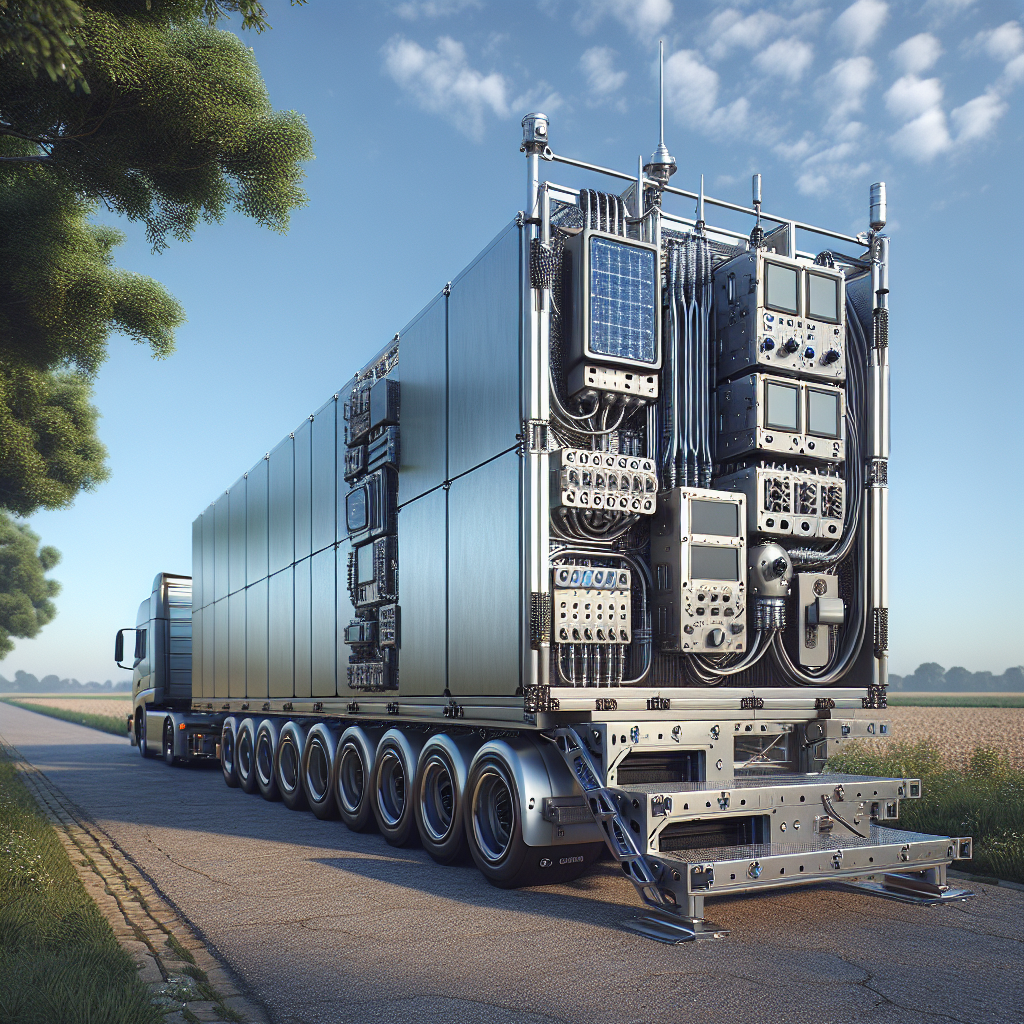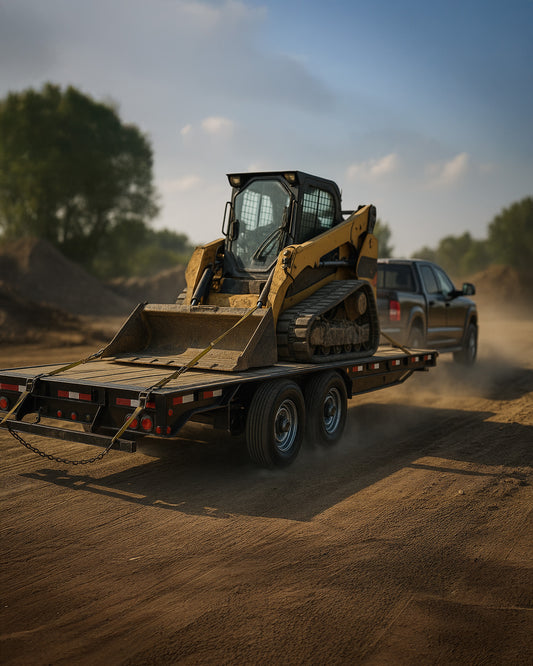

In the world of modern trailers, understanding the various sensor trailer modes is crucial for ensuring optimal performance and safety. These modes are designed to adapt the trailer's monitoring system to different operational conditions, allowing for precise data collection and analysis.
Most sensor trailers typically feature several operational modes, including:
- Standard Mode: This is the default setting, ideal for regular towing conditions. It provides essential data on tire pressure and axle temperature.
- Heavy Load Mode: When transporting heavier cargo, this mode adjusts the monitoring parameters to account for increased stress on the trailer components.
- Off-Road Mode: For trailers used in rugged terrains, this mode enhances the sensitivity of the sensors, offering real-time data to prevent potential failures.
Each mode has its unique significance. By properly setting the sensor trailer mode, operators can maximize safety and efficiency, minimizing the risk of catastrophic failures due to overlooked temperature spikes or tire issues. This proactive approach not only protects the trailer but also ensures the safety of everyone on the road.
As you prepare to set your sensor trailer to the right mode, remember to tow with peace of mind, knowing that trailerwatchdog is standing guard. Our advanced monitoring systems provide the assurance you need for a secure and reliable towing experience.
How to Access Your Trailer's Sensor Settings

Accessing your trailer's sensor settings is a straightforward process that allows you to customize the monitoring features to align with your specific hauling needs. To begin, ensure that your trailer is equipped with a compatible monitoring system, such as the one provided by TrailerWatchdog.
Follow these steps to access your trailer's sensor settings:
- Power On the System: Start by activating the trailer's monitoring system. This is typically done through a dedicated control panel or an app if your trailer is equipped with smart technology.
- Connect to the Interface: If your system uses a mobile app, connect your smartphone or tablet to the trailer's Bluetooth or Wi-Fi network. This connection allows you to manage settings remotely.
- Navigating the Menu: Access the settings menu, where you’ll find options to adjust various parameters, including sensor modes, alerts, and data logging preferences. Look for an option labeled 'Sensor Settings' or 'Modes' to begin customization.
- Select Your Desired Mode: Choose the appropriate mode based on your current hauling conditions, such as Standard, Heavy Load, or Off-Road Mode, as discussed previously. This step is vital for ensuring accurate monitoring.
- Save Your Changes: After selecting your desired settings, make sure to save any changes before exiting the menu. Some systems may prompt you to confirm your adjustments.
By following these simple steps, you can easily access and adjust your trailer’s sensor settings to enhance its performance and safety. Remember, regularly checking these settings can help in maintaining optimal trailer health and reducing the risk of issues while on the road.
Step-by-Step Guide to Set Sensor Trailer Mode

Setting the sensor mode on your trailer is crucial for optimal performance and safety. The right mode ensures that your trailer's monitoring system accurately reflects the conditions it is operating under. Here’s a detailed, step-by-step guide on how to effectively set sensor trailer mode.
Protect your trailer
- Access the Control Panel: Begin by powering on your trailer's monitoring system and navigating to the control panel. If your system is app-based, open the corresponding application on your device.
- Select ‘Sensor Mode’: Within the settings menu, locate the option labeled 'Sensor Mode' or 'Operating Mode'. This section allows you to choose the appropriate mode for your current situation.
- Choose the Right Mode: You will typically have multiple options such as:
- Standard Mode: Ideal for regular hauling conditions.
- Heavy Load Mode: Optimized for transporting heavier trailers, providing enhanced monitoring of axle temperatures and tire pressure.
- Off-Road Mode: Designed for rough terrain, this mode helps in monitoring additional parameters that may be affected during off-road conditions.
- Adjust Settings as Needed: Depending on the mode you select, there may be additional settings to customize. Make sure these are adjusted according to your specific requirements.
- Confirm Your Selection: Once you have made your choice and any necessary adjustments, confirm your settings to activate the selected mode. Look for a 'Save' or 'Confirm' button.
- Monitor Changes: After setting the mode, it’s essential to monitor the trailer's performance. Keep an eye on the sensor data to ensure everything is functioning correctly.
By following these detailed steps, you can effectively set your trailer's sensor mode and ensure that it operates efficiently under varying conditions. This proactive approach not only enhances safety but also prolongs the life of your trailer.
Common Issues and Troubleshooting in Sensor Settings

Even with the best technology, issues can arise when setting up or using your sensor trailer monitoring system. Understanding common problems and their troubleshooting steps can save you time and ensure your trailer operates smoothly. Here are some frequent issues users may encounter along with effective solutions.
- Inaccurate Sensor Readings: If you notice that the axle temperature or tire pressure readings seem off, check the following:
- Ensure the sensors are properly calibrated. Refer to your manual for calibration instructions.
- Inspect the sensors for any physical damage or debris that could interfere with their function.
- Connectivity Issues: If your app fails to connect to your monitoring system:
- Check that your Bluetooth or Wi-Fi is enabled on your device.
- Ensure that the monitoring device is powered on and within range.
- If issues persist, restarting both the app and the sensor unit can often resolve connectivity problems.
- Battery Life Concerns: If you find that your sensor's battery drains quickly:
- Ensure that your sensors are not continuously in 'active' mode when not in use. Setting them to a low-power mode can help extend battery life.
- Check for firmware updates that may improve power management.
- Failure to Switch Modes: If you are unable to switch between different sensor modes:
- Verify that you have sufficient permissions if you are using a shared application.
- Restart the device and try again; sometimes, a simple reboot can resolve software glitches.
By recognizing these common issues and utilizing the troubleshooting tips provided, you can ensure the efficiency and longevity of your sensor trailer system. Staying proactive about maintenance and addressing concerns as they arise will contribute to a safer towing experience.
Maintaining Optimal Sensor Performance for Trailers
To ensure your sensor trailer operates at peak performance, regular maintenance is essential. Just like any sophisticated system, the sensors that monitor axle temperature and tire pressure require attention to function effectively and prevent potential failures. Here are some key practices to maintain optimal sensor performance:
- Regular Inspections: Conduct routine checks of the sensors to identify any signs of wear or damage. Look for:
- Corrosion or dirt buildup on sensor surfaces.
- Loose connections that may affect performance.
- Calibration Checks: Periodically recalibrate your sensors to ensure their readings remain accurate. This can typically be done through the monitoring app or device settings, following the manufacturer’s guidelines.
- Software Updates: Keep your monitoring system’s software up to date. Manufacturers often release updates that enhance functionality and improve sensor performance. Regularly check for updates within the app or on the manufacturer’s website.
- Battery Maintenance: Monitor the battery levels of your sensors. Replace batteries as needed and consider investing in rechargeable options, which can be more sustainable and cost-effective over time.
- Environmental Protection: Protect your sensors from extreme weather conditions. Extreme heat, cold, or moisture can affect their operation. Use protective covers if necessary when the trailer is not in use.
By implementing these maintenance practices, you can ensure the longevity and reliability of your sensor system, ultimately enhancing the safety and efficiency of your trailer operations. Remember, a well-maintained system not only prevents costly failures but also provides peace of mind during your travels.
Conclusion and Best Practices for Smart Trailers

As we conclude our exploration of setting your sensor trailer to the right mode, it’s important to recognize the significant advantages that smart trailers offer. By leveraging technology, you can not only enhance the performance of your trailer but also ensure the safety of your cargo and reduce the risk of unexpected failures. Here are some best practices to optimize your smart trailer experience:
- Stay Informed: Regularly educate yourself about the latest advancements in trailer technology and sensor capabilities. This knowledge will help you make informed decisions regarding upgrades and maintenance.
- Utilize Data Analytics: Take advantage of the data collected by your sensors. Analyzing this information can provide insights into your trailer's performance trends, allowing for proactive maintenance and operational improvements.
- Engage with the Community: Join forums and social media groups of other trailer owners who use sensor technology. Sharing experiences and tips can help you learn valuable practices and solutions.
- Conduct Regular Training: Ensure that all operators of the trailer are trained on how to use the monitoring system effectively. Familiarity with the features will enhance safety and operational efficiency.
By incorporating these best practices, you can maximize the benefits of your smart trailer system and safeguard your investment. Tow with peace of mind, knowing that trailerwatchdog is standing guard.




